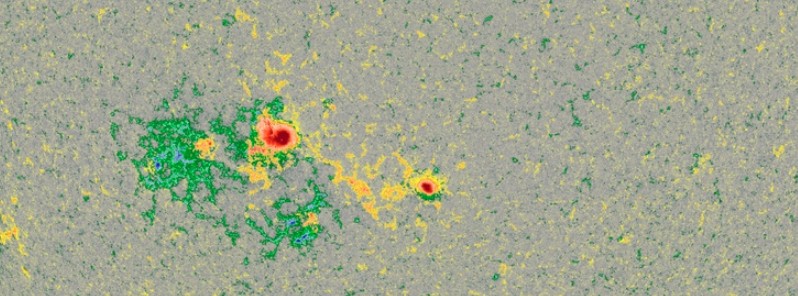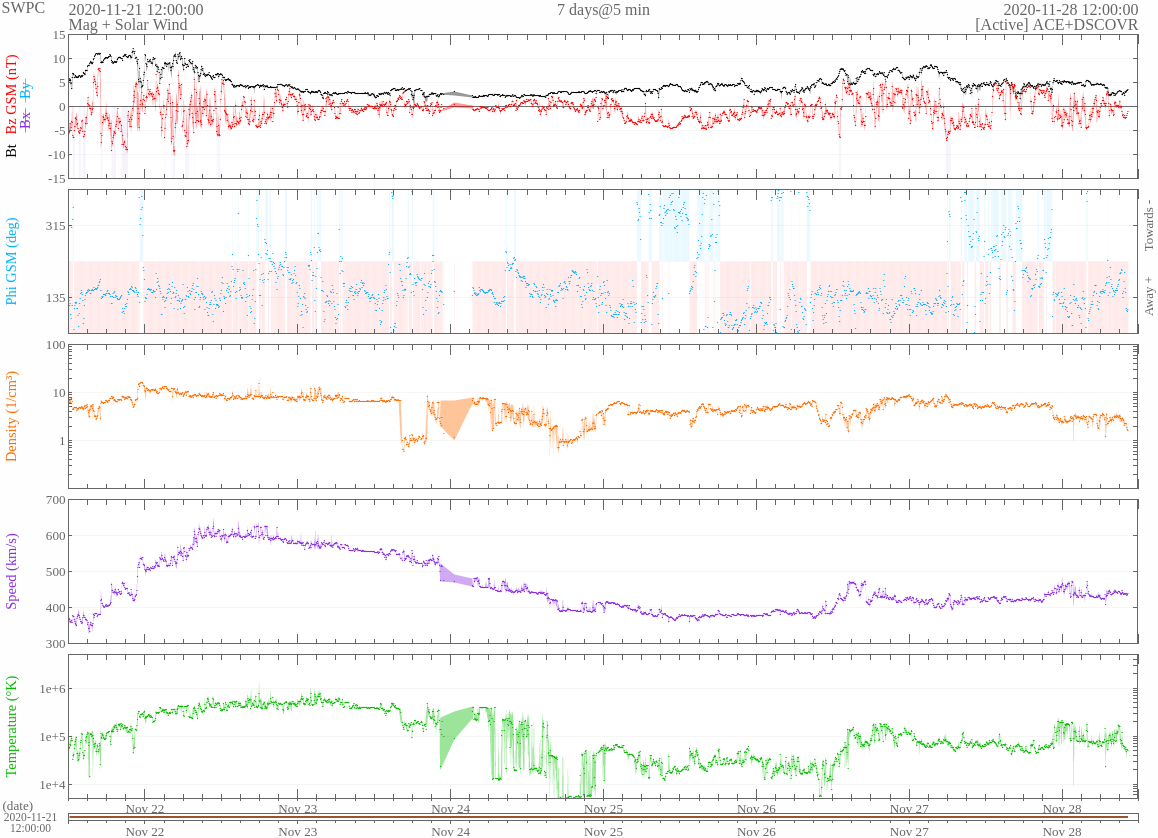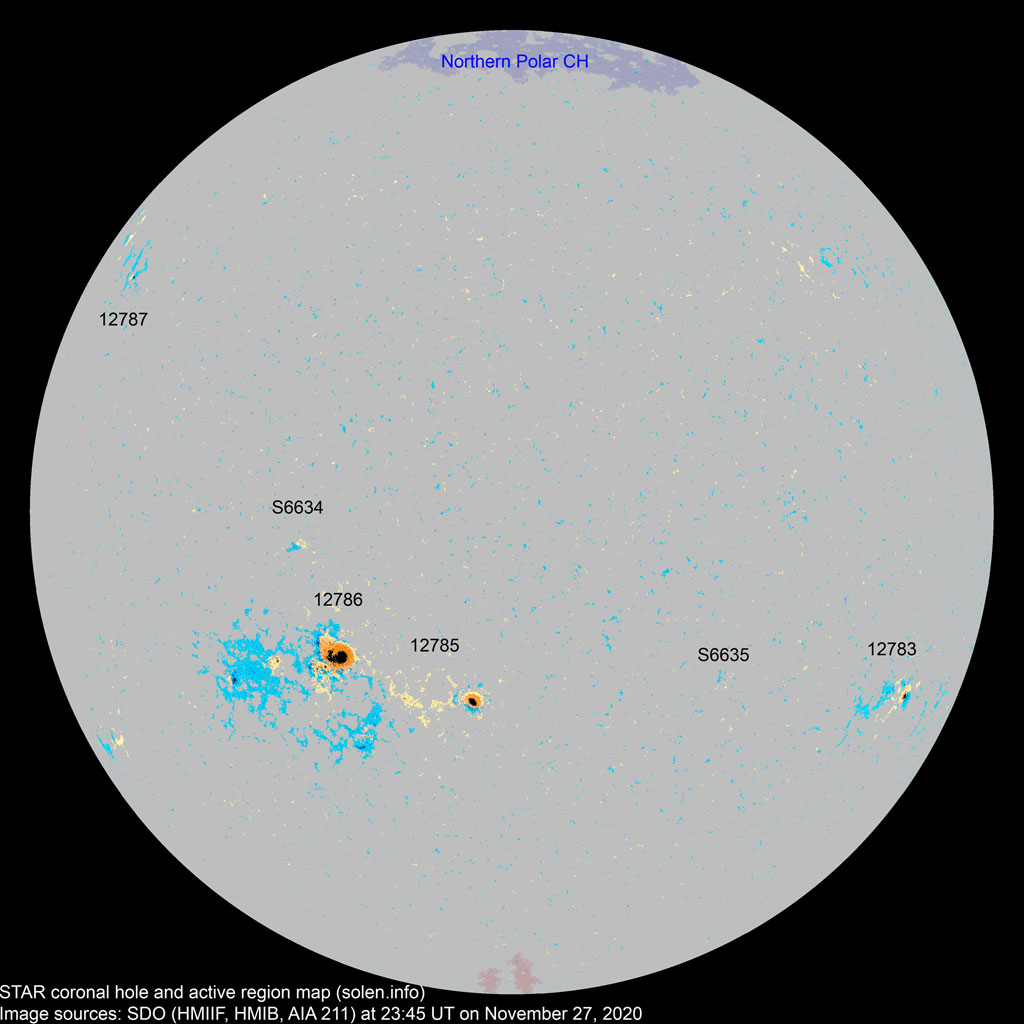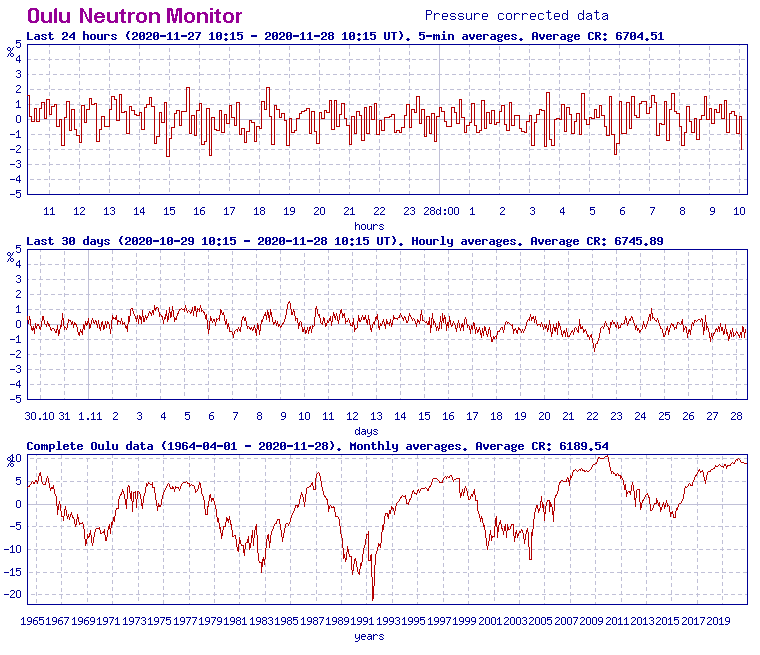Biggest sunspot in years producing multiple B- and C-class solar flares

Although solar activity remains at low levels, Active Region 2786 — the biggest sunspot in years — has produced multiple C- and B-class flares since November 25. Coronal Mass Ejections (CMEs) were also observed, but none was Earth-directed. While we are still experiencing solar minimum effects, solar activity is ramping up as we head deeper into Solar Cycle 25.
In total, Active Region 2786 produced 17 B-class and 8 C-class flares from November 25 to 08:00 UTC on November 28, with the strongest being C3.8 at 12:53 UTC on November 26.
The region currently has Beta-Gamma magnetic configuration and is capable of producing even stronger eruptions. Its position currently favors Earth-directed CMEs.



Coronal Mass Ejection (CME) activity was observed at the NE limb on November 26, first visible in LASCO C2 coronagraph imagery at 21:24 UTC. The source region is believed to have emanated from a region of enhanced plage at, or just behind the NE limb. Dimming was visible in this area as viewed on STEREO Ahead EUVI 195 imagery.
Associated with this event was a C2.6 long duration event that began at 19:20 UTC on November 26, peaked at 21:23 and ended at 23:53 UTC. The CME had no Earth-directed component.
A second, narrow, fast-moving CME was observed off the W limb, first visible in LASCO C2 coronagraph imagery at 05:36 UTC on November 27.
Initial SWPC analysis and model run output suggested a possible glancing blow at Earth midday (UTC) on December 1, but subsequent model runs showed the event was off the Sun-Earth line.




There are currently 4 numbered active regions on the Earth side of the Sun — AR 2783 (Beta), 2785 (Beta), 2786 (Beta-Gama), and 2787 (Alpha).


Solar activity is expected to remain at low levels with a slight chance for M-class flare activity from region 2786 through November 30.
Solar wind parameters returned to nominal levels on November 27, with wind speed ranging from 390 – 442 km/s. Nominal wind speed conditions are expected through November 30.
The geomagnetic field was quiet to unsettled on November 27 and is expected to remain mostly quiet through November 30.


While solar activity is ramping up as the Sun heads deeper into its new 11-year cycle (SC25), we are still experiencing solar minimum effects and increased cosmic radiation.
From January 1 to November 28, 2020, our star has been blank for 206 days — or 62%.
In 2019 we had a total of 281 blank days — 77%, in 2018 221 days — 77%, and in 2017 104 days — 28%.


Solar Cycle Sunspot Number Progression from 1950 – 2020. Credit: SWPC
Featured image: Active Region 2786 at 09:45 UTC on November 28, 2020. Credit: NASA/SDO

Video paused.
Keep watching.